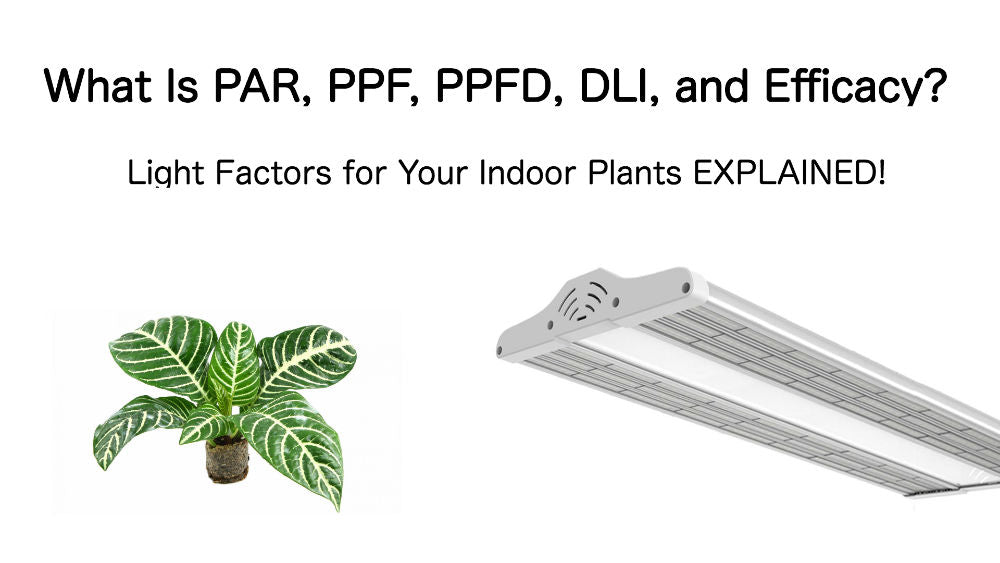
What Is PAR, PPF, PPFD, DLI, and Efficacy? Light Factors for Your Indoor Plants EXPLAINED!
PAR
Photosynthetically Active Radiation, or PAR, is the band of wavelengths between 400nm and 700nm. Plants use this range of electromagnetic radiation to perform photosynthesis, but most efficiently absorb wavelengths in the mid-400s (blue) and mid-600s (red).
Higher PAR promotes faster plant growth and can lead to larger plants. It has been suggested that light intensity is even more important than spectrum. Take an HPS grow light spectrum for instance. Many HPS spectrums contain peaks at 600nm or below, in the deep orange and yellow part of the curve. This is not very efficient for photosynthesis, yet HPS grow lights have been hailed as the best flowering bulb/spectrum for many years. Why? What HPS bulbs lack in spectrum, they make up for in intensity. This is why 1000-watt HPS bulbs can still outperform some of the LEDs that are marketed as“1000-watt replacements”. The intensity was just not there in 2009 with early LED grow lights, nor today, with some of the lower quality or claim-boasting LED grow lights on the market. But today, the good quality LED grow lights are just as good, if not better, than HPS grow lights.
Light quality is important, so just thowing an intense light at a plant is not very efficient or beneficial to the plant’s development if one is to expect the certain results during the vegetative and flowering cycles.
One misconception that needs some clearing up: the term PAR is not a quantity of light, but rather a quality of light. This term is often misused by some manufacturers and growers to refer to a measurement. For example, if someone refers to a light beaming out 750 PAR, what is that telling you? Is that a PPF of 750 umol/s or is it a PPFD of 750 umol/s/m2? And at what distance? That measurement that they intend to state is photon flux or photon flux dentisty.
Photosynthetically Active Radiation is the only light intensity measurement that truly matters to your plants. Don’t use wattage to determine the intensity or light output of an LED grow light! Wattage only tells you how many watts your fixture is consuming. Wattage can also be reported in the total amount of LED watts (number of LEDs on the fixture multiplied by their wattage), but this is not relevant and is primarily used as marketing material to inflate the fixtures power and light intensity.
Lumens and Lux have widely been used as grow lighting intensity measurements. Lumens and Lux make sense for environmental white light in home, commercial, and industrial applications, but they are not relevant to any type of grow lighting. Why? Lumens are the quantity of visible light emitted from a source and with peak sensitivity in the green portion of the spectrum. The more lumens, the brighter the light source. The problem is that lumens are weighted for human eye sensitivity. Human’s eyes are most sensitive to green light (500nm to 550nm). Luminous flux is applicable for humans, but not plants since they are most sensitive to blue and red light. Humans may see a light source as “bright” but the plants will not “see” the light source as intense. Therefore, lumens will not tell you how much light is available for photosynthesis. As the saying goes, “lumens are for humans”.
Lux is the amount of lumens over one square meter and reported as lumens/meter2. It is a measure of illuminance. As an example, 10,000 lumens is equivalent to 10,000 lux.
Do not use lumens or lux to determine a grow light’s intensity and potential for plant growth. Meters that measure lumens or lux can greatly underestimate an LED fixture’s PAR—particularly when the spectrum is mostly blue and red with no or little green. Lumens and lux are just as irrelevant as using the diode wattage or the amount of watts that the fixture draws from the wall to determine whether the fixture will provide enough light for your plants. Instead, consider photon flux and photon flux density.
Photosynthetic Photon Flux (PPF)
Photosynthetic Active Radiation is measured using the photon flux. Photosynthetic Photon Fux, or PPF, tells you how many photosynthetically active photons are being emitted from the light source every second. Photon flux is similar to lumens, but photon flux is best described as a measure of intensity, while lumens is a measurement of brightness. Brightness is not the same as intensity. A green light may appear bright to humans, but shorter wavelengths such as blue light and UV are more intense. To correct the green bias that is present in a lumen readings, PPF assigns the wavelengths between 400nm and 700nm with near equal weight.
What is a photon? A photon is a particle of light. There are MANY photons present in a typical light source, so we use Avogadro’s number to help us wrap our heads around the dizzying array of photons. Avogadro’s number is equal to 6.022 x 10^23, which is equal to one mole. In other words, there are 6.022 x 10^23 photons in one mol. This number is expressed to the millionth, or micromole (umol) when we are measuring PAR to allow us to work in whole numbers instead of decimals.
PPF is measured in micromoles per second. You will typically see this expressed as umol/s or umol/second, other times you will see it listed as ‘number PPF’ (200 PPF, for example) or ‘PPF: number’ (PPF: 200, for example). Photon flux can only be accurately measured inside an integrating sphere, a very expensive hollow, spherical unit with white, reflective insides. The light source is placed inside the unit and multiple sensors record photon output. The PPF measurement is the total photon output of the unit, but does not tell you how much light is reaching your plants.
Plant Biologically Active Radiation Flux
Plant Biologically Active Radiation (PBAR) flux is similar to PPF, except it takes into account the wavelengths from 350nm to 800nm. The units are in μmol/sec. This measurement is based on the observation that plants posses photosensitive pigments outside the 400nm and 700nm range. The PBAR flux measurements are a little bit higher than the PPF since the reading is taking the UV and IR photons into consideration, assuming the light source contains these wavelengths.
PBAR flux is becoming an increasingly important metric since medical plants demonstrate sensitivity to the wavelengths outside of the typical PAR range and many LED grow light manufacturers are including these wavelengths in their spectrums. It is rare to find the PBAR flux on many manufacturer’s specification sheets, let alone PPFD readings.
Photosynthetic Photon Flux Density (PPFD)
Researchers and growers use Photosynthetic Photon Flux Density, better known as PPFD, to measure the photons that actually hitting the plant. PPFD measures how many photons are hitting an area per second. PPFD is reported in micromoles per meter squared per second, or umol/m2/s, by using a quantum sensor to a spot measurement.
The reading that you would take is only good for that particular point is space. It does not tell you the PPFD over the entire canopy. To get these measurements, one would need to take multiple readings across the light footprint at varying distances.
Light intensity drops off by the inverse square with increasing distance. This is known as the Inverse-Square Law. As an example, a source of light striking a 1 m2 surface at 1 meter drops off to 25% of the intensity over a distance of 2 meters, down to 11.11% intensity at 3 meters and only 6.25% of the original intensity at 4 meters! The closer the light to the plant, the more photons will strike the leaves. Backing the light away by just a little amount can have a significant impact on PPFD levels that reach your plants. Furthermore, the leaves off to the sides and corners of the light footprint and below the canopy will be receiving the least light since these areas are the farthest from the light source. Be wary of extremely high PPFD readings from manufacturers since the readings were probably taken unrealistically close to the light source.
An interesting feature of LED grow lights is that the diodes can be fitted with secondary lenses to focus the light and increase intensity. Secondary lenses, along with the effects of light contribution from other diodes, can actually mitigate the effects of the Inverse-Square Law up to certain distances when used in solo. Therefore, an LED grow light may hold the same light intensity a few feet away from the fixture and only then start to drop off. The same cannot be said about other types of fixtures that scatter light in all directions such as MH, HPS and CMH bulbs. Note: When multiple MH, HPS or CMH bulbs are used in a grow they will also hold their intensity at far distances due to 'light contribution' from adjacent fixtures.
Since the photon count can vary dramatically across the fixtures fooprint, it is important for manufacturers to report the average PPFD at specified distances. For instance, multiple spot readings should be taken at 12” and then the average PPFD should be reported at this distance. The process should be repeated for 18”, 24” and 36”. Some manufacturers specify that their lights should be used within inches of the plants. Therefore, an average PPFD reading should be taken at the distance that the light is intended to be used at.
Some manufacturers, still report the light output in lumens or lux. Again, this is unuseful information. There are some manufacturers that do not publically report PAR measurements or they are often reported as “PAR: number”. What is this telling us? Not much. It is important for these readings to be indicated as a PPFD reading in umol/m2/s. Furthermore, the manufacturers should report the distance and location at which the PPFD readings were taken (example: “500 umol/m2/s at 18” at center). The best PPFD reported use the average PPFD at specified distances (example: “Average PPFD: 500 umol/m2/s at 18”).
PPFD is similar to lux. It is a per area measurement. Lumens are to PPF as lux is to PPFD. For reference, to convert lux to PPFD you would multiply the lux reading by a conversion factor. The conversion factor varies depending on the light source. For instance, sunlight has a conversion factor of 0.0185. A HPS lamp uses a conversion factor or 0.0122. Example: 70,000 lux * 0.0122 = 854 umol/s/m2. To convert PPFD to lux, multiply the PPFD by a different conversion factor. Sunlight has a conversion factor of 54, while a HPS lamp has a conversion factor of 82. Example: 400 umol/s.m2 * 82 = 32,800 lux. For comparison, mid-day sun has a value of approximately 110,000 lux. Converted to PPFD, this is 1342 umol/s/m2.
These are only back of the napkin calculations and will not give you a very accurate number, but will instead provide a ballpark range if you are used to using lumens and lux and want to start understanding your plants light requirements in terms of PPF and PPFD. This calculation may also assist growers who have been using lumens and lux when talking about their HID setup and need assistance in finding an equivalent LED system or need to add additional light intensity to their grow. Since lux is not weighted toward the plants photosynthetic requirements, these conversions should only be used as a rough reference.
Daily Light Integral (DLI)
PPFD is a point measurement of light intensity, but what the plants really care about is the total number of photosynthetically active photons that they are absorbing each day. This total is known as the Daily Light Integral, or DLI, and is measured in moles per m2 per day, or mol/m2/d. In other words, in it the sum of the PPFD measurements taken over a 24 hours period. The amount of photons that strike the plants leaves during the daily photoperiod is the driving factor is how quickly and efficiently the plant can make sugars to drive cellular processes.
Higher PPFD over a shorter period can be equivalent to a lower PPFD over a longer period. But increasing the day length is not necessarily beneficial to all plants. Plants still need a dark period to processes the carbon-based molecules created during photosynthesis and this is the reason why 24 hours of light exposure will not increase growth rates but instead hinder them. Also, medicinal plants require an average of 6 hours of darkness during their vegetative phase and 12 hours of darkness during the flowering cycle for proper growth and flowering. Altering the light/dark cycle ratios can confuse your plants and affect development.
A minimum DLI is required for all plants for proper growth and flowering. Too much light can cause bleaching and leaf burn since the plant’s internal processes are not able to keep up with all of the extra incoming light.
DLI on the surface of our planet can range from 5 to 60 mol/m2/d depending on the time of year, day length, latitude and cloud cover. The sun at it’s brightest puts out about 2000 umolm2/s, but medicinal plants grown outdoors is not absorbing the full 2000 umol/m2/s throughout the day. Morning and evening PPFD readings are a lot lower, so the average PPFD throughout the day might not even exceed half of this level. This is something to keep in mind when choosing an LED grow light. More light is not necessarily a good thing. Your plants can only absorb so much light.
Most indoor growers need not to worry about DLI. Though the lighting intensity is variable depending on the chosen light source, the photoperiod is already set for 18 hours and 12 hours for vegetative stage and flowering stage, respectively. Therefore, the indoor grower only needs to only consider PPFD when planning out their grow setup.
Greenhouse growers growing in seasonal latitudes need to take DLI into consideration when planning out supplemental lighting during times of the year with less light, such as late autumn, winter, and early spring in most areas. DLI in greenhouses rarely exceed 25 mol/m2/d in greenhouses, hence the need for additional lighting.
To calculate DLI, multiply the PPFD reading by the photoperiod and divide by 1,000,000.
DLI = PPFD x (3600 x photoperiod) / 1,000,000PPFD: umol/m2/s
3600 seconds in one hour
Photoperiod is in hours
1,000,000 umols = 1 mole
Example: 800 umol/m2/s x (3600s x 12h) / 1,000,000 = 34.6 moles/d
Measuring PAR
Photosynthetically Active Radiation is measured with a quantum meter, sometimes called as a PAR meter. The devices are typically hand-held units with an external sensor-ideal for quick spot measurements. Greenhouses typically use a stationary device that is connected to a data logger to measure PPFD and DLI.
LED grow light manufacturers and growers might do their best to take PAR measurements at different distances and even report them as an average, but even the best measurements can be limited by the device. The output (data) is only as good as the software and technology that interprets the input. In other words, we need to know the limitations of a quantum meter before deriving conclusions about the data.
The first limitation of a quantum meter is that they measure incoming photons in the 400nm to 700nm range. While the bulk of photosynthesis occurs on this range, the chryptochrome photoreceptor has been shown to be sensitive to UVA as low as 320nm. And while UVB does not directly support photosynthesis, there is evidence that it can increase resin production. Futhermore, phytochrome is sensitive to far-red light, around 730nm, which plants use for phytochrome signaling, flower initiation, stimulating the Emerson Effect and elongation in low light environments. These other wavelengths outside the PAR range clearly affect plant development and response, yet are not accounted for in a quantum meter reading.
Secondly, not all meters measure PAR equally. Though the ideal response is 400nm to 700nm, some wavelengths are measured with greater sensitivity. The response curve differs between sensors and brands. Most quantum meters read broad-spectrum light sources more accurately than narrow-band light sources. For instance, the Apogee Original Quantum Sensor represents a range of 410nm to 655nm and requires a conversion factor to be applied when measuring LEDs. In contrast, the Apogee Full-spectrum Quantum Sensor provides a range* of 389nm to 692nm—a more accurate representation of PAR—and measures LEDs more accurately without using a conversion factor.
The Full-spectrum sensor fills out the PAR range more fully than the original sensor. The blues and deep reds are more accurately represented in the full-spectrum curve. Underneath a typical LED grow light, the original sensor would only pick up 50% of the blues at 400nm and hardly any deep reds at 660nm.
Finally, quantum meters do not take into account the quality of light that is absorbed by the plant. The best full-spectrum quantum meter will measure the photon count of 400nm to 700nm with near equal intensity. Yet, this is part of the problem. Different wavelengths provide varying degrees of photosynthetic responses. Quantum meters do not take these plant absorption ratios into account.
The meters overestimate the other wavelengths that the plants do not absorb as efficiently and provide an exaggerated reading. Another way to view this is to consider a very intense green light source. The quantum meter will register a high reading due to the brightness of the source, but the green light will not be very effective in growing plants nor will it grow quality plants. Red and blue light are required for efficient photosynthesis and to drive important plant processes and reponses. To further complicate things, different species or varieties of plants absorb different ratios of wavelengths. These absorption differences are not accounted for in a PAR meter.
If one were to measure the PPFD of fixtures with different spectrums and equal intensity, the readings would differ slightly due to the varying spectrums. Manufacturers and growers wanting to accurately measure PPFD need to ensure they are using a full-spectrum unit, similar to the Apogee Full-Spectrum Quantum Sensor, or use a correction factor for less than full-spectrum coverage. The brand and model should at least be indicated so the wavelength response curve can be referenced when needed. In general, quantum meters will provide similar readings under different fixtures although the wavelength sensitivities of the meters are different and the spectrums of the fixtures vary. You only need to be aware of the reasons for these differences and to not put all of the weight on the PAR reading.
Yield Photon Flux
Photosynthetic Photon Flux Density takes into account the photons in the 400nm to 700nm range with equal weight. For instance, 500 red photons, 500 green photons and 500 blue photons would all have very similar PAR readings. But as we have seen, not all photons are equally utiilzed to drive photosynthesis. Yield Photon Flux (YPF) corrects these discrepancies by providing different weights to the wavelengths based on their photosynthetic efficiency. YPF is based on the photosynthetic action of plants and instead of using a 400nm to 700nm range (PAR), YPF covers the entire range of wavelengths from 360nm to 760nm.
Though, YPF takes the action spectrum of plants into consideration, it may not be the best measurement of the useful light quantity. The action spectrum is the relative rate at which photosynthesis occurs at a given wavelength. In the same manner as PPFD, if the light source was entirely red, it would have a high YPF, but it would not contain the rest of the wavelengths needed for optimal growth and development.
Furthermore, YPF assumes McCree’s action spectrum is without error. McCree (1972) only examined 22 different crops and weed species, which does not represent the entirety of the hundreds of thousand plant species on the planet. Also, McCree measured leaf absorptance over several hours which does not represent how leaves might absorb light over the entirety of the day or at different times in their life cycle. Lastly, McCree measured a single leaf’s absorbance and not how the entire plant absorbs light. Red and blue light are absorbed most efficiently by a single leaf, but green light passes through the upper canopy and is absorbed by the leaves in the lower parts of the plant.
There are meters that are commercially available that can measure YPF. Yet, they do not exactly match the action spectrum curve. PAR meters can measure YPF with a relatively accurate degree of measurement when a correction factor is applied. Overall, the YPF measurements will be lower than the PPDF readings, since the wavelengths are weighted according to the McCree curve.
While YPF attempts to correct the shortcomings of a PPFD measurement using a PAR meter, it is not completely accurate. But at least YPF considers wavelengths below 400nm and above 700nm. YPF also accounts for the quality of the light source and reports a quantity of useable light. It is a step in the right direction, however, still needs refining and specificity towards different plants, particularly medical plants, in this case.
PPF Efficacy
The efficacy of a grow light is reported in umol/J. This is the number of micromoles the fixture produces per joule. In other words, for every watt that enters the grow light, how many photons are exiting the fixture? PPF efficacy is also known as PAR efficacy, PAR efficiency, or simply, efficacy.
To calculate PPF efficacy, the manufacturer, or you, need two sets of numbers—the PPF and the wattage (J/s). Dividing the PPF by the wattage will give you the umol/J. For example: 1100 umol/s / 500 J/s = 2.2 umol/J. As an aside, if you know the PPF efficacy and wattage of a grow light you can calculate the PPF. To do this, multiply the PPF efficacy by the wattage. For example: 2.5 umol/J x 400 J/s = 1000 umol/s.
As of 2018, diode or board efficacies can approach 3 umol/J for certain wavelengths or spectrums, typically red-shifted LED or white diodes. However, once incorporated into an LED grow light, the efficacies may drop to 1.5 to 2.2 umol/J depending on the other wavelengths and the driver’s efficiency.
1.5 umol/J is considered efficient. Anything above 2.0 umol/J is considered very efficient. For comparison, many HPS fixtures on the market have an efficiency of 1.3 umol/J or less, with some of the best HPS grow lights approaching 1.7 umol/J. The best ceramic metal halide grow lights have an efficiency of just under 2.0 umol/j. HPS and CMH efficiencies will increase in the near future, but LED efficiencies will increase at a more rapid rate. In 2014, the best LED grow lights had an efficiency around 1.7 umol/J, but nowadays, we are seeing efficincies at 2.2 umol and above. As of this writing, the most efficient LED grow light we can find is around 2.87 umol/J! In January 2017, Philips reported an LED interlight with an efficiency of 3.0 umol/J.
Efficacy is why wattage does not matter for determining the light intensity of an LED grow light or any grow light. More efficient grow lights will emit more useful light while drawing fewer watts.
PAR efficacy may not be as important to some growers as other growers. Indoor farmers with a large operation should care about efficacy more than smaller growers since a difference of less than 1 umol/J will have a huge impact on their electric bill. For the average home grower, the cost difference between a semi-efficient and very efficient LED grow light may not be a huge factor, but as most growers DO care about their electricity bill, every watt being pulled from the wall is important.
PBAR Flux Efficacy
As of this writing, the PBAR flux is not a very commonly seen metric, but should be a more accurate measurement of photosynthetic efficacy since the PBAR flux measurement considers wavelengths outside the normal PAR range which can affect photosynthesis. This measurement is very similar to the PPF efficacy, but instead of dividing the PPF by the fixture wattage, PBAR flux is divided by the total wattage. The units are reported in umol/J. If a fixture contains wavelengths outside of 400nm to 700nm, the PBAR efficacy will be higher than the PPF efficacy.
YPF Efficacy
Similar to PBAR efficacy, it is rare that a manufacturer will report the YPF efficacy. It is calculated by dividing the YPF by the fixture wattage. The units are the same—umol/J. The YPF efficacy will be lower than the PPF efficacy because the YPF reading will be smaller than the PPF reading due to the weighing factor applied to the different wavelengths.
We hope these explanations of terms were helpful! If you have any questions, email us at info@ledgrowlightsdepot.com or leave a comment below. Happy grows!
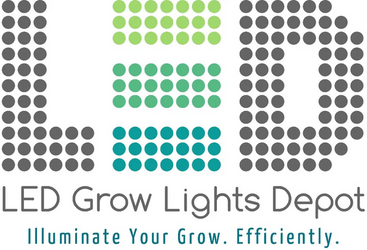
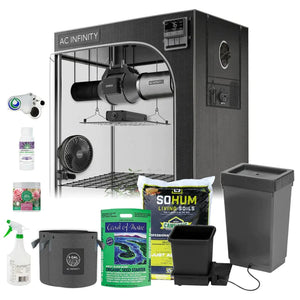
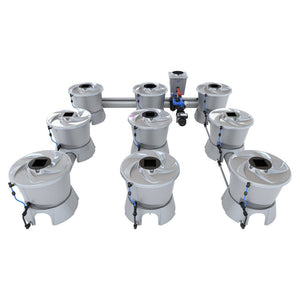
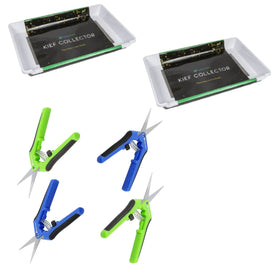



Comments
Leave a comment